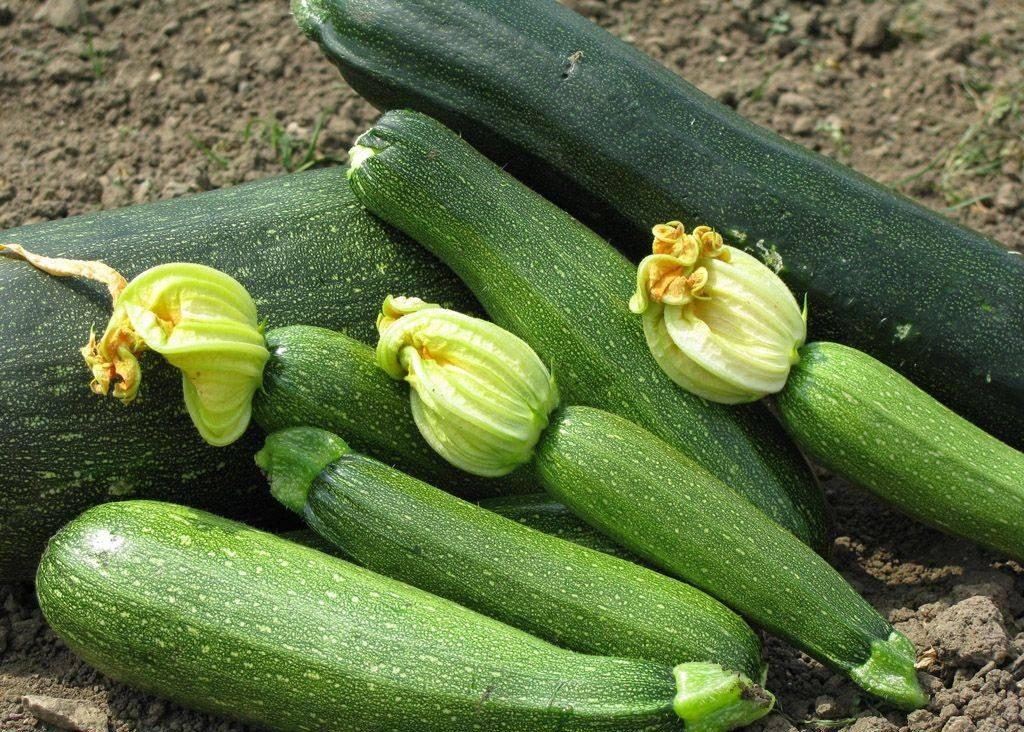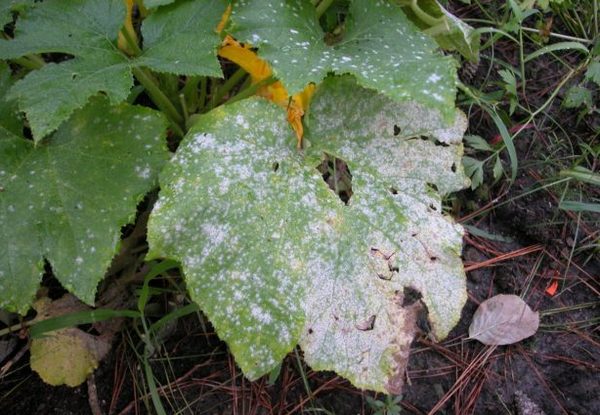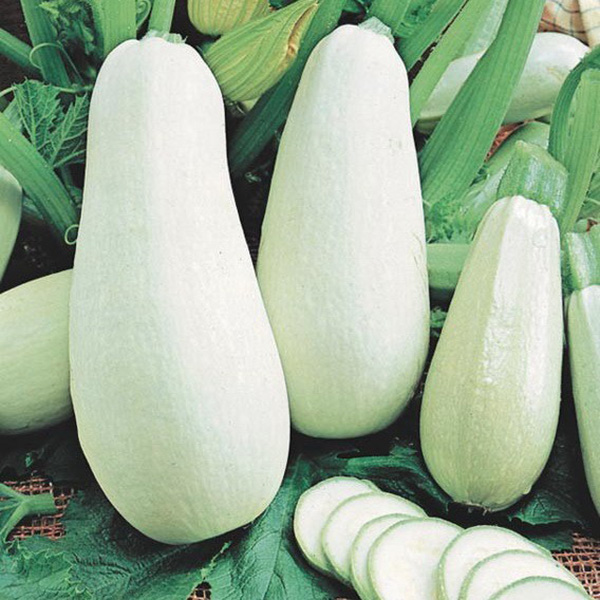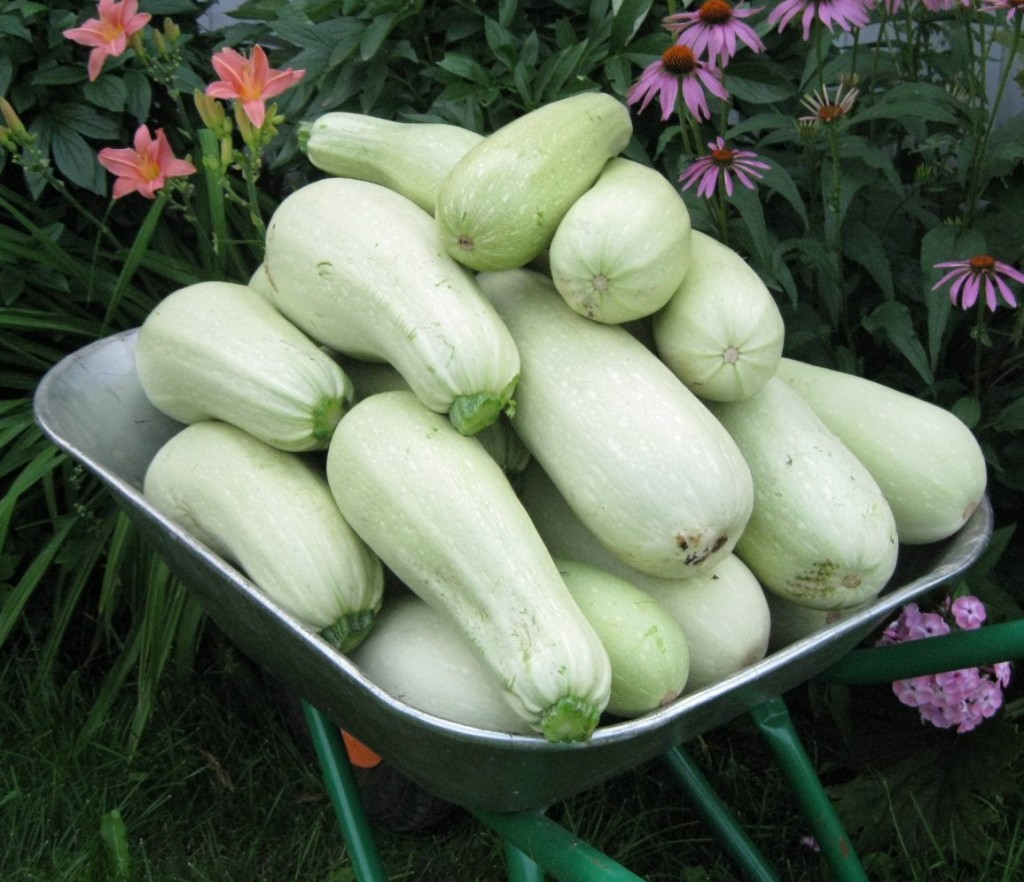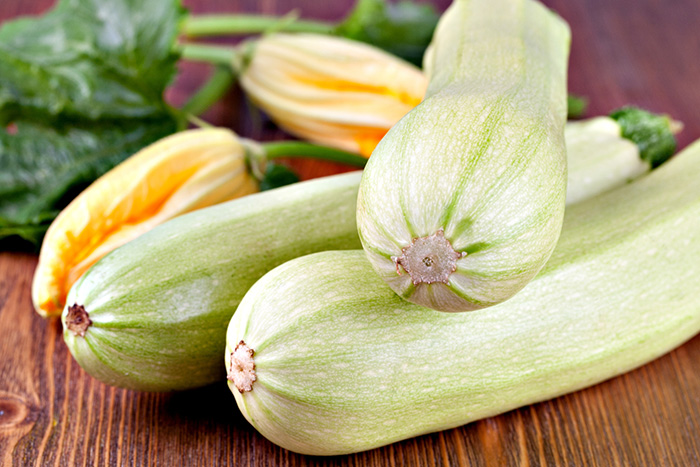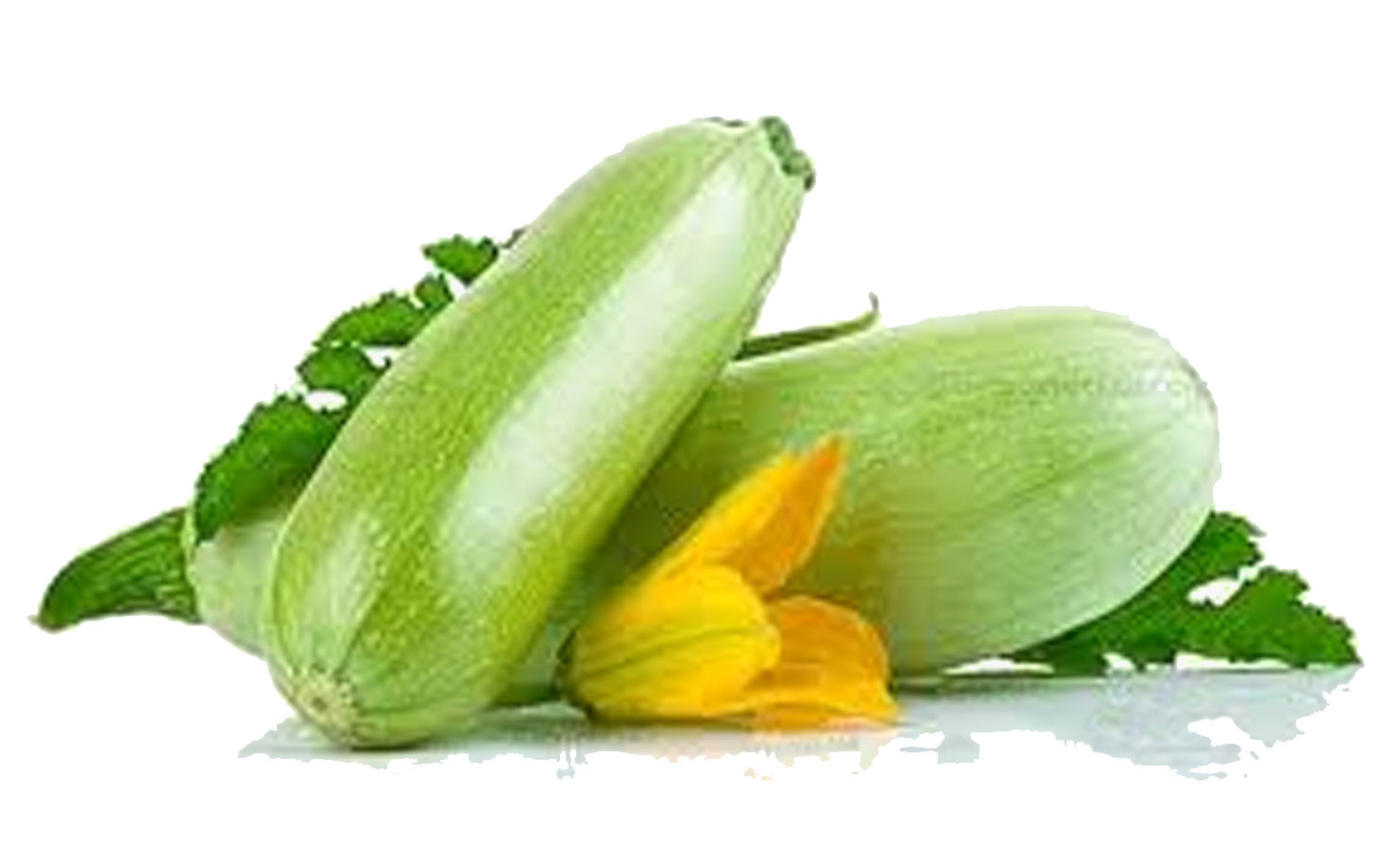Content:
The popularity of zucchini is due to its unpretentiousness, pleasant taste and the ability to prepare a variety of dishes. There are many different varieties of zucchini, each of which has its own merits. The Gribovsky zucchini is especially popular among summer residents.
Description and characteristics of the variety
It belongs to medium early varieties and is quite high-yielding. The crop can be harvested as early as 60 days after sowing seeds in the ground.
The bush develops quickly and has medium branching. Large leaves are attached to the stem with long (33 cm) petioles. The dark green leaves are pentagon-shaped.
Cylindrical white fruits reach a length of more than 20 cm. The pulp is of medium density and is colored white-yellow. The mass of one zucchini ranges from 1-1.5 kg.
The popularity of zucchini of this variety is due to the advantages inherent in them. Among the most significant are:
- the ability to tolerate well the change of climatic conditions;
- frost resistance;
- great taste;
- high productivity;
- high immunity to diseases.
The fruits are used fried or canned for the winter.
Features of planting and care
The culture can be grown both by seedling and seedling methods. Before planting, the seeds need preliminary preparation. They are soaked for 10 hours in a solution of 1 tsp. nitrophoska dissolved in 1 liter of water. This will help disinfect the seed and increase resistance to disease infestation.
Now the seeds need to germinate. To do this, they need to be carefully and evenly placed on a damp cloth and covered with it. Moisten the fabric as it dries. In this position, the seeds remain for 2-3 days. After the expiration date, the seeds swell, but do not germinate yet.
At this time, you can start preparing the container and soil for planting seeds. Experienced gardeners recommend using peat pots as a container. They are filled with soil prepared from an equal amount of peat and soil from the garden. The depth of planting seed material in the ground is within 3-5 cm.
As soon as the first shoots appear, they need to be fed. Mineral fertilizers are used as top dressing. The second feeding is carried out approximately 10-12 days after the first.
It is necessary to water the plants in a timely manner. For this, only warm water is used.
Seedlings can be planted in open ground after the first 3 true leaves have formed on the stem.
The temperature of the soil in which it is planned to plant young plants should reach at least 15 degrees. Otherwise, the zucchini will take much longer and more difficult to take root.
To get a good harvest of zucchini, the soil in the garden needs to be prepared in the fall. A sunny, draft-free location is ideal for growing zucchini. Gardeners recommend growing squash on sandy loam or medium loamy soils with a neutral pH.
The bed must be dug up to the length of the shovel bayonet, then organic fertilizers are added to the soil.You can use compost or manure. The garden bed prepared in this way must be covered with a special non-woven material. Thanks to this, it will be possible to accelerate the process of decomposition of soil components, which will increase its fertility.
It is necessary to plant zucchini seedlings at a distance of 70 cm from each other. In this case, the plants will not shade each other, which contributes to obtaining a rich harvest.
After planting the plants in open ground, it is recommended to cover them with a covering material. This will help to avoid damage to even weak seedlings by late spring frosts. After 4-5 days, the shelter can be removed.
Zucchini can withstand a short drought, but overflow can lead to rotting of the fruit. If the fruit has just begun to rot, you need to cut off the decayed place with a sharp knife, hold the cut over an open fire for a few seconds. This procedure will lead to the formation of a crust at the cut site. After that, the decay process will stop and the fruit will continue to grow.
In order for the plants to grow well and give a friendly harvest, it is recommended to adhere to the following rules:
- Remove weeds in the garden in a timely manner. Otherwise, the weeds will not only shade the squash, but also take away most of the nutrients from the soil.
- Loosen the soil between the beds. The loosening depth should be small. Otherwise, damage to the plant root system cannot be avoided.
- Zucchini of this variety have the ability to quickly outgrow. To avoid this, you need to harvest as often as possible.
- Yields can be increased by attracting pollinating insects. For this, some flowers are processed with sugar or honey syrup.
Diseases and pests
Despite the fact that Gribovskie zucchini have a high immunity to the development of diseases and pest damage, prevention must be carried out.
The most dangerous pests for zucchini are:
- spider mite,
- aphid,
- sprout fly.
Among the diseases are:
- powdery mildew
- anthroknosis,
- gray rot.
When the first signs of disease or pest attack are detected, gardeners recommend immediately treating the plants with special chemicals.
If you follow these simple rules, you can get a generous harvest of zucchini from a small area.

